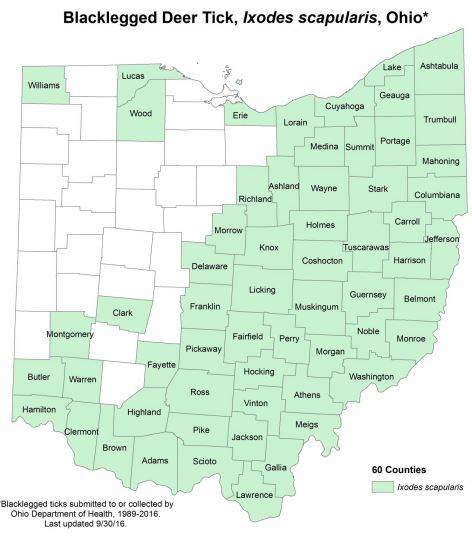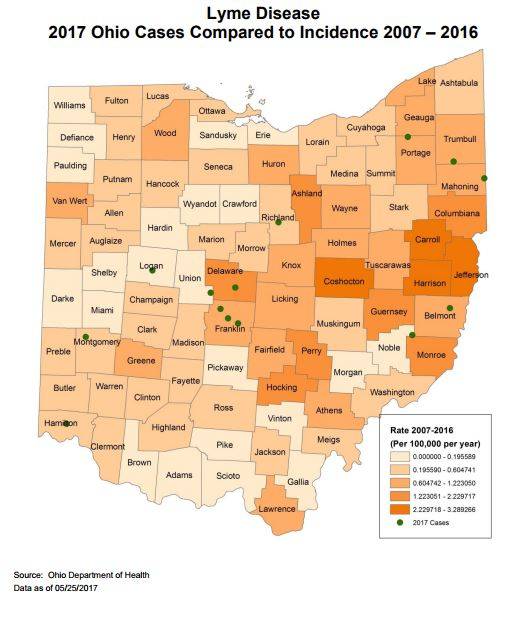


Lyme disease is spreading in Fayette County and is prompting concern from local health care workers who say people need to know the signs and seek treatment right away if they are showing any symptoms.
Clista Moore, care team nurse at Fayette County Memorial Hospital’s Same Day Care Clinic, said at least three cases of Lyme Disease were diagnosed at the hospital in June.
“Just know that Lyme disease is in the community right now. I think people need to be aware of the bull’s eye rash that comes along with it,” said Moore.
Moore said recently one person came to the Same Day Care Clinic with a bull’s eye rash and bloodwork confirmed it was a case of Lyme disease.
“It is treatable with an antibiotic,” said Moore, “but it’s better to treat it early. Some people wait years to be diagnosed.”
Lyme disease is transferred to humans bitten by the parasitic black-legged deer ticks that are infected with a bacterium called Borrelia burgdorferi. Common symptoms of Lyme disease include headache, fever, fatigue and skin rash, according to the Ohio Department of Health, and if not treated, can spread into the joints, heart, and nervous system.
And while deer are a preferred host for the ticks to feed on, the Ohio Department of Health said the black-legged ticks acquire the Lyme disease bacteria from rodents, like mice, and not from the deer. The Ohio Department of Natural Resources Division of Wildlife has also issued a statement about ticks and says Lyme disease cannot be spread by consuming venison.
As the deer tick population increases across Ohio, the number of Lyme diseases cases in the state rises. Deer ticks have now spread to 60 of Ohio’s 88 counties.
In 2016 there were 160 reported cases of Lyme disease in Ohio, a number that grew by 200 percent when compared to just 43 cases reported in 2006.
The Ohio Department of Health reports there have been 14 confirmed cases of Lyme Disease in Ohio as of May 25, 2017.
To prevent becoming infected with Lyme and other diseases carried by ticks, the Ohio Department of Health recommends walking in the center of trails, using insect repellents approved by the Environmental Protection Agency, showering within two hours being exposed to areas where ticks are prevalent, and checking household pets when they come inside, too.
Deer tick adults and nymphs will be active throughout the summer, according to the ODNR Division of Wildlife.




